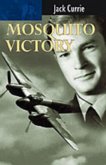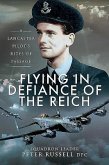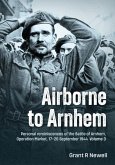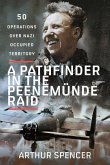On the night of 19/20 September 1944, a force of 227 Avro Lancasters and ten de Havilland Mosquitoes was despatched to attack the German towns of Mönchengladbach and Rheydt. The Master Bomber for the raid was none other than Wing Commander Guy Penrose Gibson VC, DSO & Bar, DFC & Bar. Along with his navigator, Squadron Leader James Warwick DFC, Gibson was flying Mosquito KB627 of 627 Squadron from RAF Coningsby, where he was serving as the Base Operations Officer. By this stage of the Second World War, Gibson was arguably one of the most famous of all the Allied aviators. Aged just 26, few in the country, if not across the Allied world as a whole, would not have heard his name or seen a picture of his face. It was his leadership of the daring Dambusters Raid, Operation Chastise, in May 1944 that firmly propelled him into the public's eye - and ultimately led to his award of the Victoria Cross. Gibson need not have been flying that fateful night. Following his involvement in the attack on the Ruhr dams, and a subsequent goodwill lecture tour of the United States, Gibson, a veteran of 170 or more operational sorties, would have been entitled to a less front-line role. Churchill, for example, had hoped that Gibson would stand for election as a Member of Parliament. Gibson, however, was soon agitating a return to flying duties - resulting in his participation in the attack on Mönchengladbach and Rheydt. The raid was a success. Throughout the operation, Gibson's instructions over the target were easily heard and gave no hint of impending trouble. It was during the return leg that something went wrong. At around 22.30 hours on the 19th, Gibson's Mosquito slammed into the ground at Steenbergen in the Netherlands; both men on board were killed. Witnesses on the ground reported hearing an aircraft flying low, observing that its cockpit was illuminated, and then, seconds later, the violent sight and sounds of its final moments. The cause of the crash has been the subject of intense speculation ever since. Had Gibson and Warwick fallen to the guns of a German night fighter, or, tragically, 'friendly fire' from an Allied bomber? Was it mechanical failure or possibly pilot error that had led to the disaster? Like the disappearance of Glenn Miller or Rudolf Hess' flight to Britain, the death of Guy Gibson VC, one of Britain's greatest wartime heroes, is among the Second World War's most intriguing mysteries. How could one of the RAF's most experienced pilots have simply fallen from the sky over Occupied Europe without explanation. In The Death of Guy Gibson the author sets out answer that very question.
Bitte wählen Sie Ihr Anliegen aus.
Rechnungen
Retourenschein anfordern
Bestellstatus
Storno








